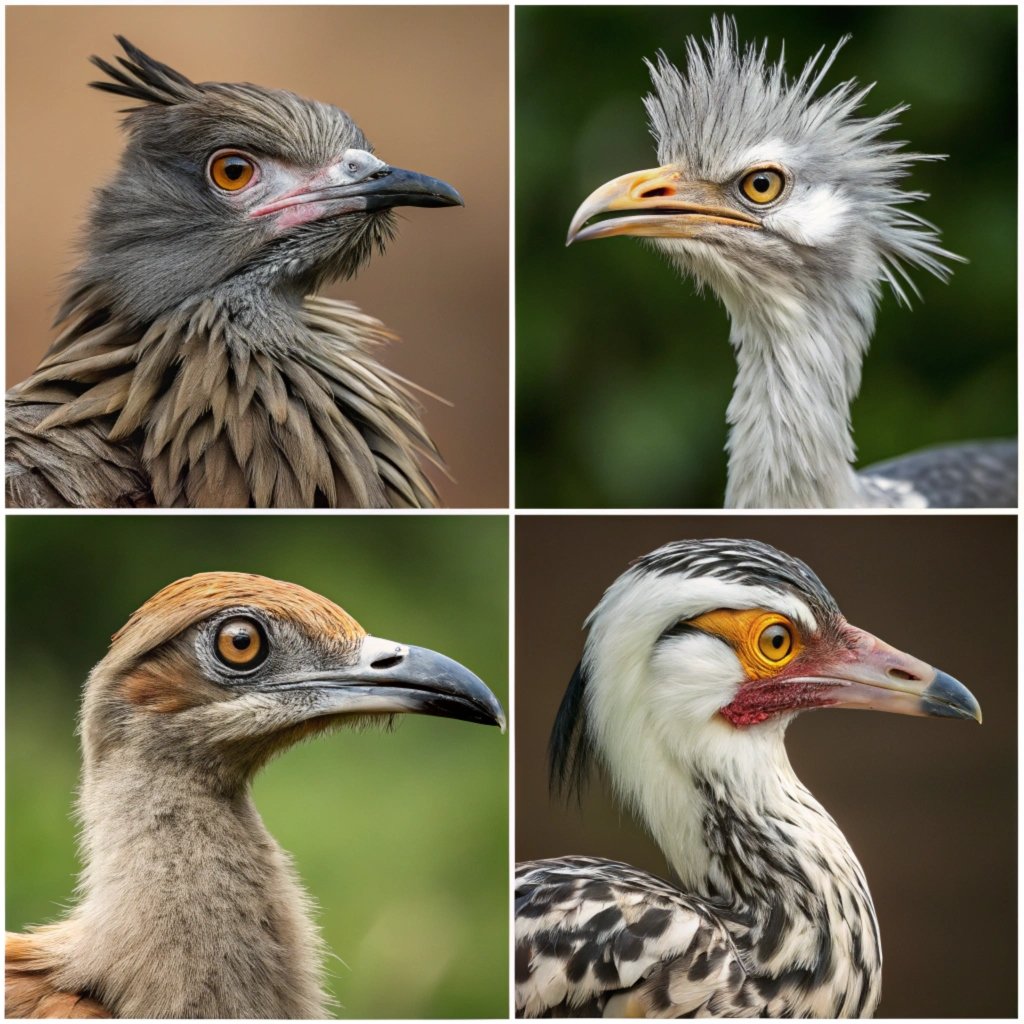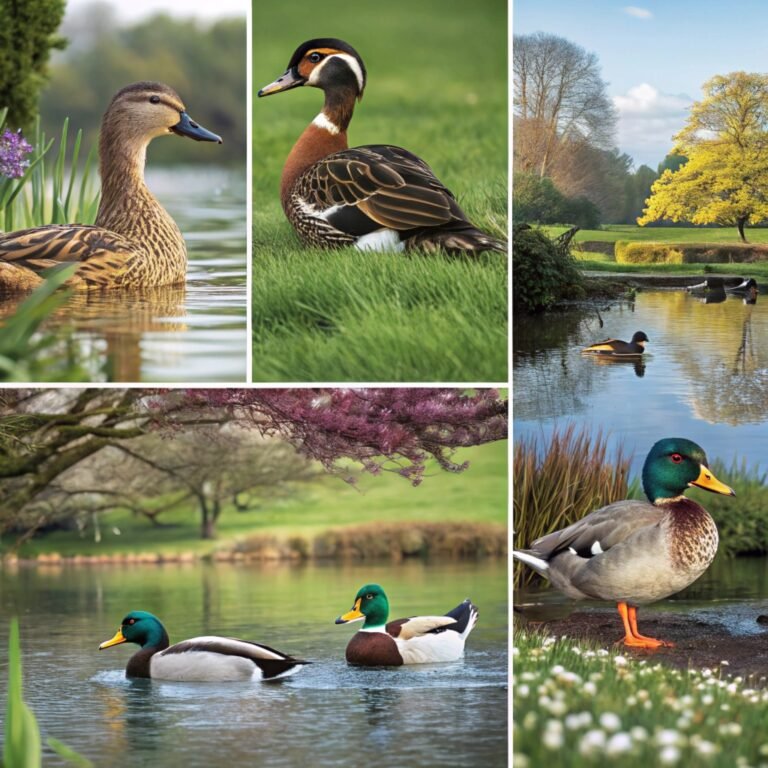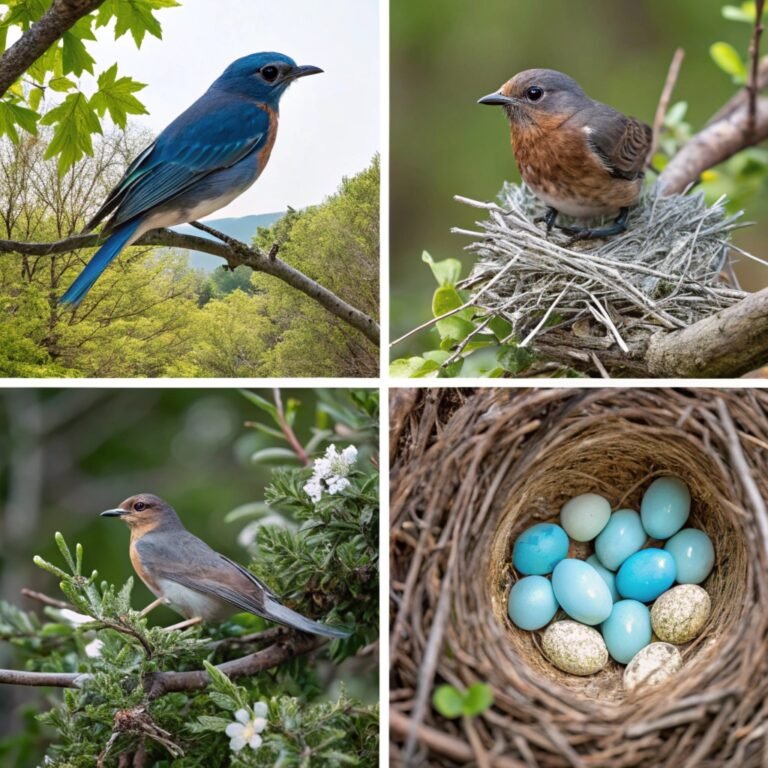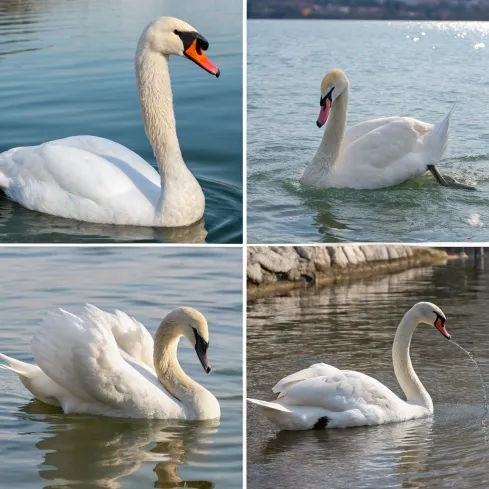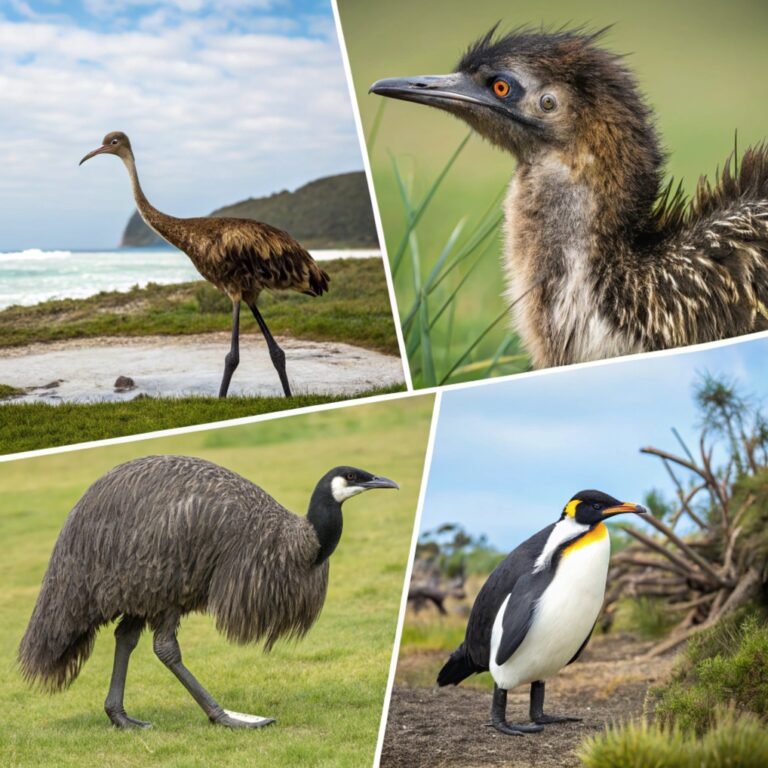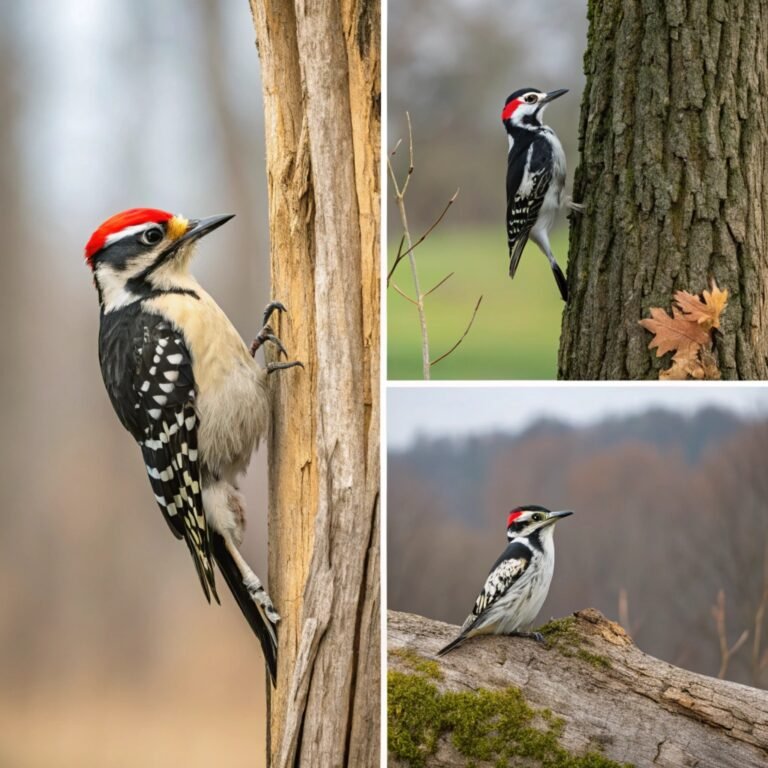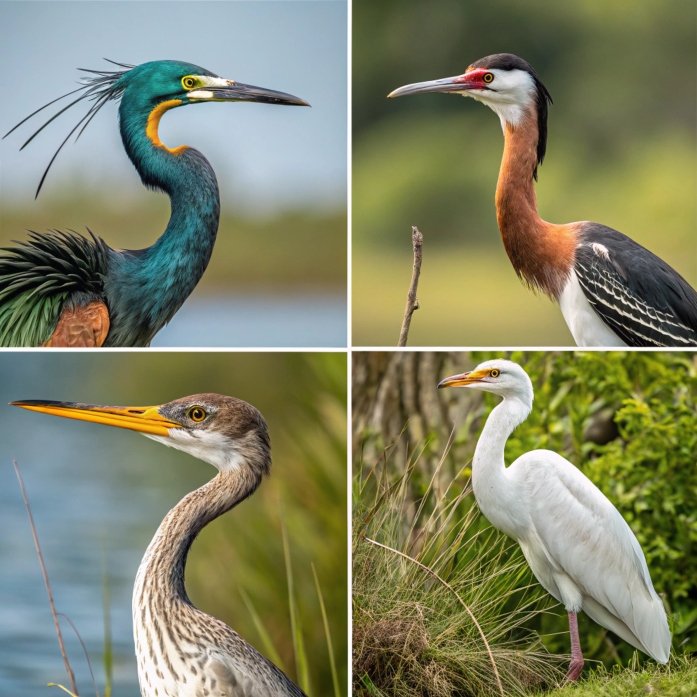Exploring the 10 Ugliest Birds of the World – A Unique Collection of Nature’s Most Peculiar Avian Specimens
In the vast and diverse world of birds, not all feathered creatures are blessed with stunning plumage or graceful features.
While many birds captivate us with their beauty, there exists a fascinating subset of avian species that challenge our conventional notions of attractiveness.
These peculiar birds have evolved unique characteristics that, while perhaps not aesthetically pleasing to human eyes, serve essential purposes in their survival and ecological roles.
This comprehensive exploration delves into the world of the 10 ugliest birds, showcasing their distinctive features, habitats, and the surprising ways in which their unconventional appearances contribute to their success in the wild.
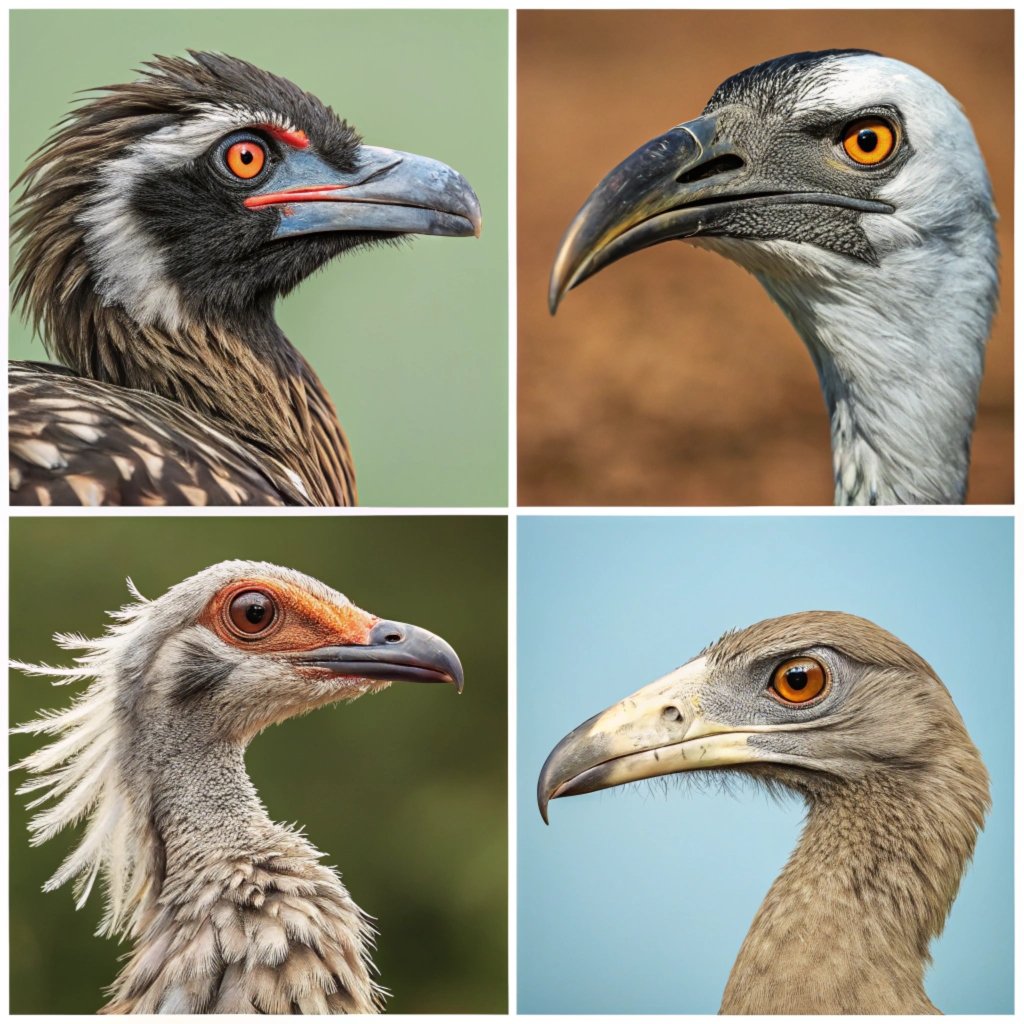
Key Takeaways:
- Unconventional Beauty: These birds remind us that beauty in nature is diverse and subjective.
- Evolutionary Marvels: Each “ugly” feature serves a crucial purpose in the bird’s survival and adaptation.
- Ecological Importance: Despite their appearance, these birds play vital roles in their ecosystems.
- Conservation Concerns: Some of these unique species face threats and require protection efforts.
- Fascinating Behaviors: Many of these birds exhibit intriguing habits and vocalizations.
- Global Distribution: The ugliest birds can be found across various continents and habitats.
- Size Diversity: From small potoos to large storks, ugliness comes in all sizes.
- Specialized Diets: Many of these birds have adapted to unique food sources.
- Cultural Significance: Some cultures revere these birds despite their unusual appearances.
- Scientific Interest: Researchers study these birds to understand evolutionary adaptations.
- Photogenic Challenges: Wildlife photographers find these birds both difficult and rewarding to capture.
- Public Perception: These birds often become internet sensations due to their unique looks.
- Educational Value: They serve as excellent examples of nature’s diversity in educational programs.
- Avian Intelligence: Some of these birds display remarkable problem-solving abilities.
- Breeding Strategies: Unique physical features often play a role in mating rituals and reproduction.
The Marabou Stork: Nature’s Undertaker
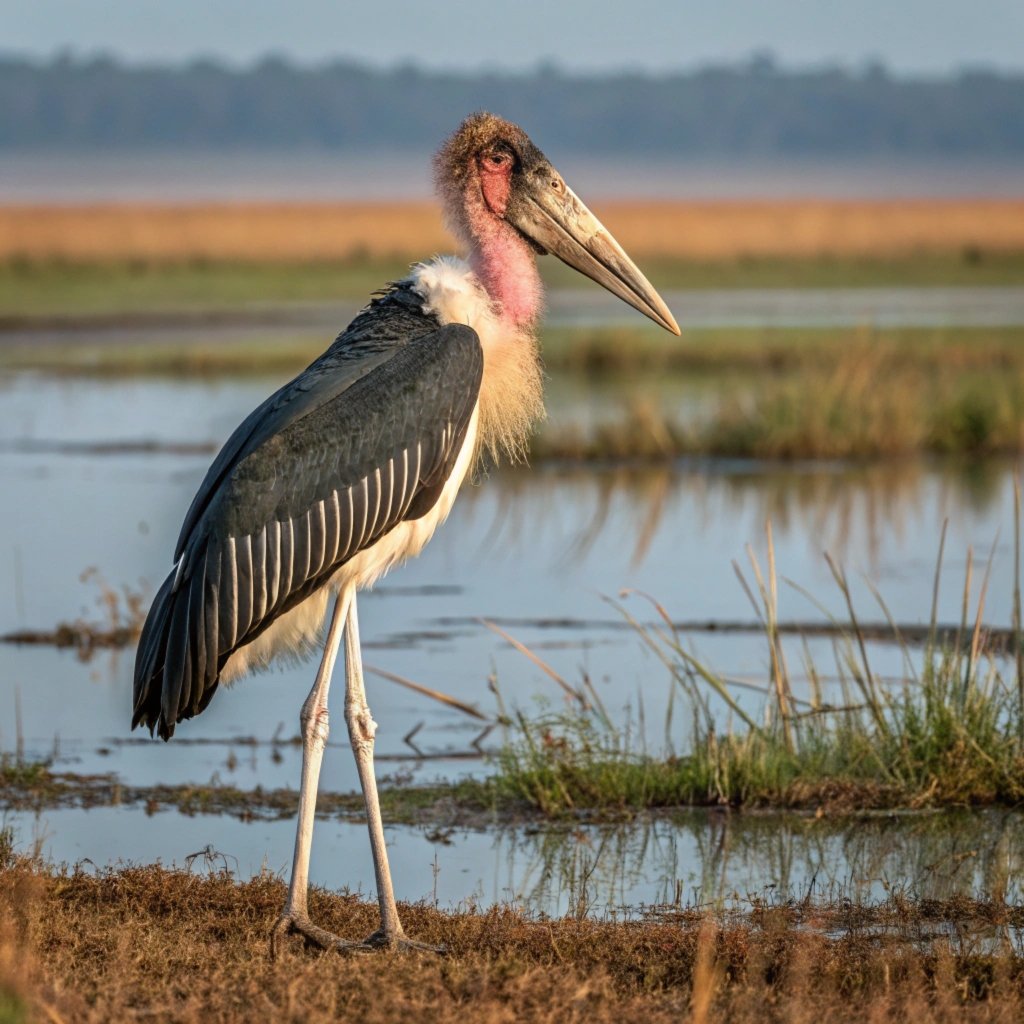
The Marabou Stork, often referred to as the “undertaker bird,” stands as a prime example of nature’s more unconventional designs.
Native to sub-Saharan Africa, this large wading bird cuts an imposing figure with its height reaching up to 5 feet and an impressive wingspan of around 10 feet.
The Marabou’s most striking features include its bald head, pendulous pink throat sac, and scruffy feathers, which collectively contribute to its macabre appearance.
Its long, thin legs often appear white due to a peculiar habit of defecating on them for cooling purposes.
Despite its unappealing looks, the Marabou Stork plays a crucial role in its ecosystem as a scavenger, helping to clean up carrion and maintain environmental balance.
Its unique adaptations, while not aesthetically pleasing, are perfectly suited to its lifestyle and habitat, showcasing nature’s prioritization of function over form.
The Shoebill: A Living Dinosaur
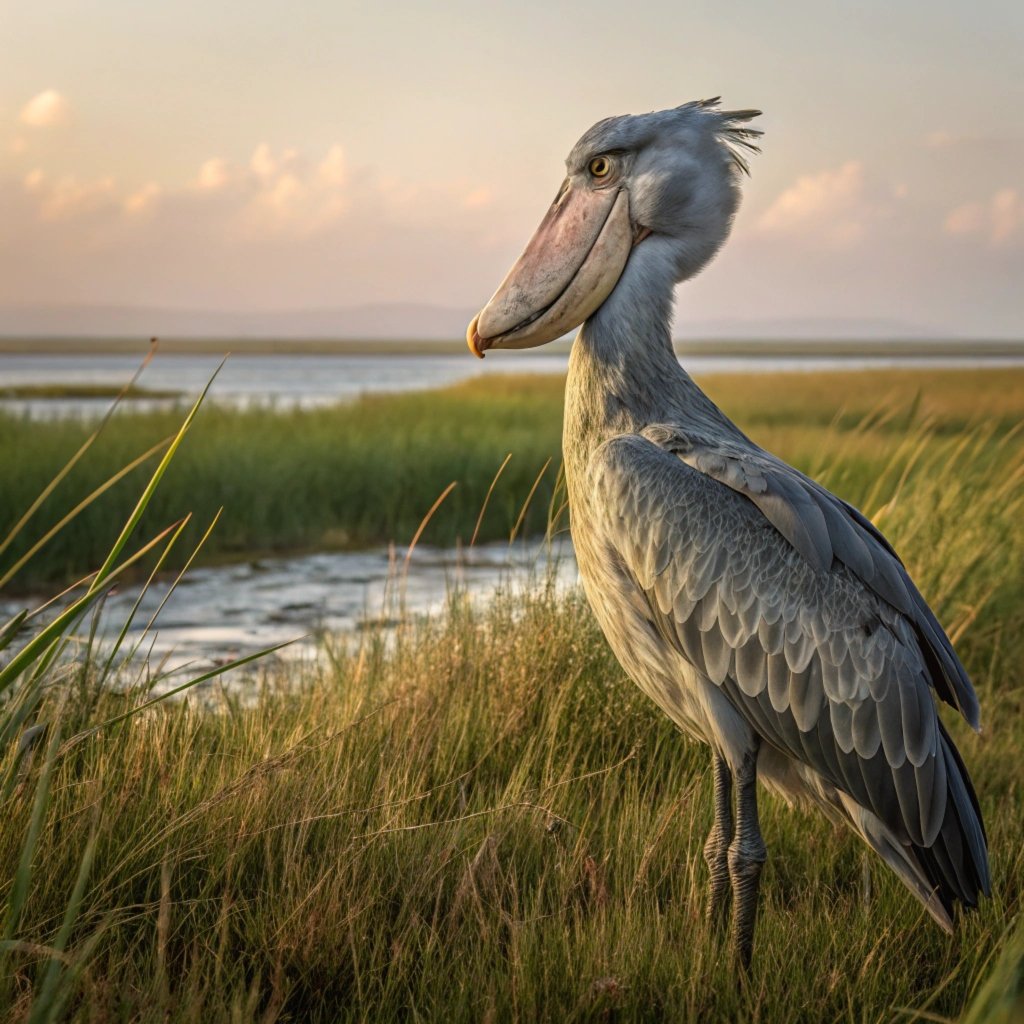
The Shoebill, scientifically known as Balaeniceps rex, is a bird that seems to have stepped out of prehistoric times.
This Central-Eastern African native is characterized by its most prominent feature: a massive, shoe-shaped beak that gives the bird its name.
Standing at an impressive 43-55 inches tall, with a weight of up to 12 pounds, the Shoebill is a formidable presence in its swampy habitat.
Its large, bulging eyes and stoic expression add to its peculiar appearance, often described as derpy or comical.
Despite its ungainly look, the Shoebill is a skilled hunter, using its powerful beak to catch prey such as lungfish, water snakes, and even baby crocodiles.
This bird’s unique appearance, while considered unattractive by human standards, is a perfect example of evolutionary adaptation, allowing it to thrive in its specific ecological niche.
The Northern Bald Ibis: Medieval Plague Doctor
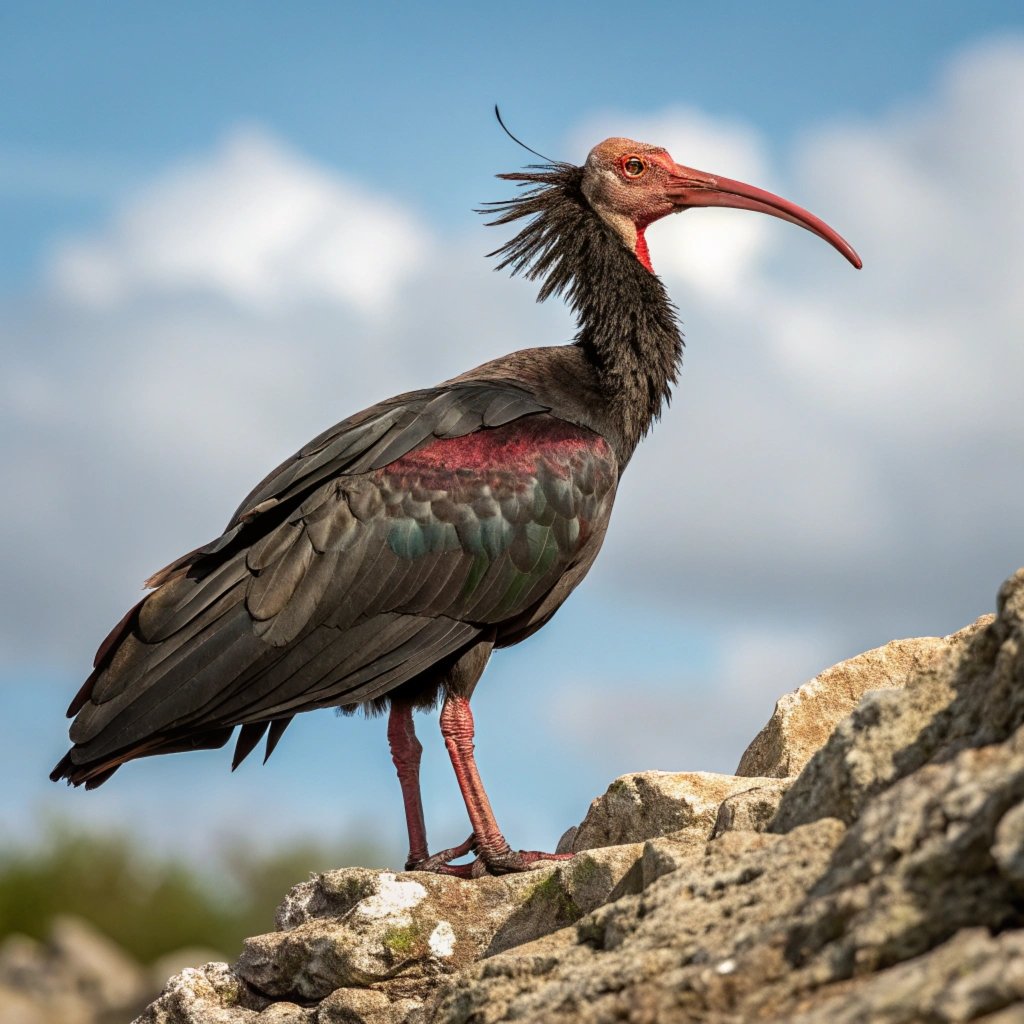
The Northern Bald Ibis, or Geronticus eremita, presents a striking and somewhat unsettling appearance that has earned it comparisons to medieval plague doctors.
This critically endangered bird, found primarily in Morocco and Syria, is characterized by its long, curved red beak and featherless head.
The contrast between its bare, reddish skin and dark plumage creates a stark and unusual visual.
Standing at 28 to 31 inches tall with a wingspan of up to 53 inches, the Northern Bald Ibis is a medium-sized bird with a big impact on its observers.
Its diet consists of a variety of small animals, including lizards, beetles, and caterpillars.
Despite its unconventional looks, this ibis species plays a crucial role in its ecosystem and has been the focus of intensive conservation efforts due to its dwindling population, highlighting the importance of preserving biodiversity regardless of aesthetic appeal.
The Potoo: Master of Camouflage
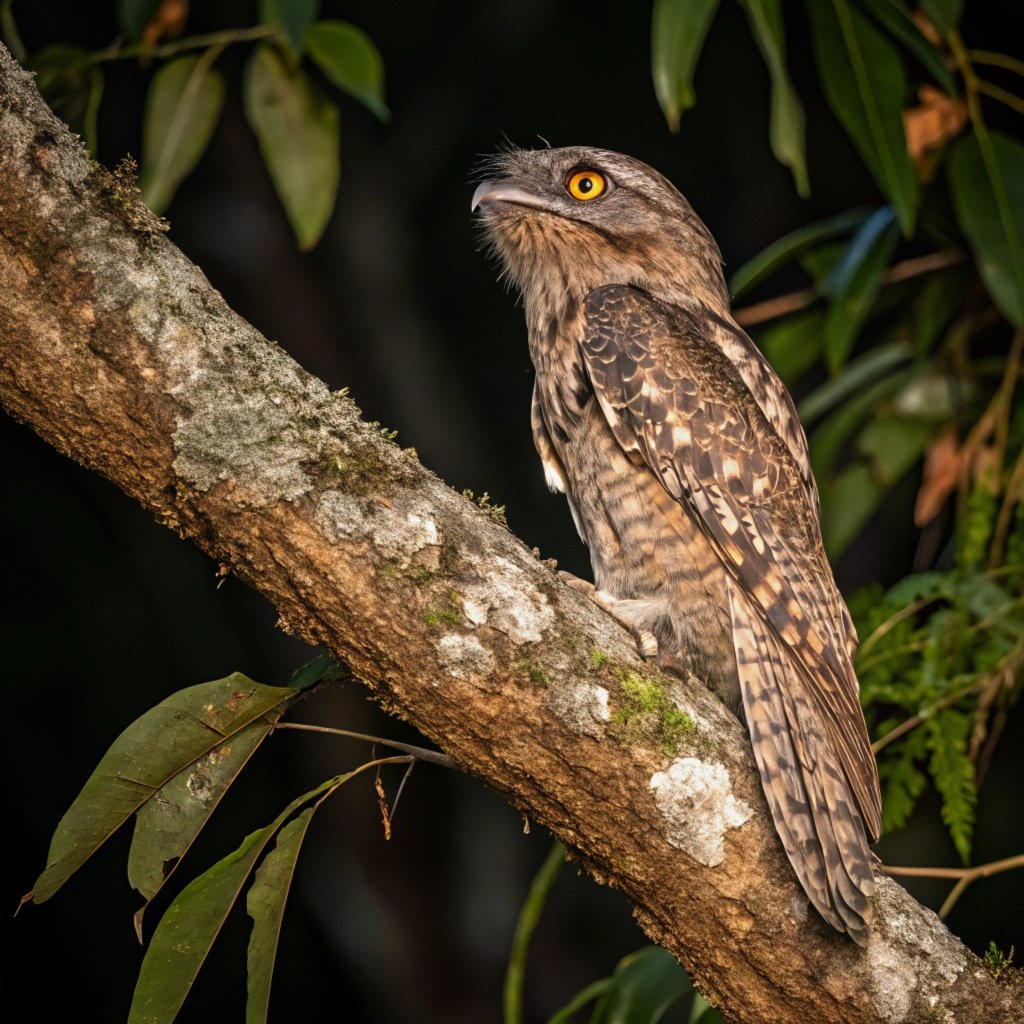
The Potoo, belonging to the genus Nyctibius, is a bird that exemplifies the phrase “so ugly it’s cute.”
Native to Central and South America, this nocturnal creature is known for its most distinctive feature: large, yellow, bulging eyes that seem almost comically oversized for its body.
The Potoo’s mottled plumage of greens, grays, and browns allows it to blend seamlessly with tree bark, making it a master of camouflage.
Standing at 19 to 24 inches tall, with a wingspan of about 29 inches, the Potoo is perfectly adapted for its nighttime lifestyle.
Its wide mouth is ideal for catching large flying insects, its primary food source.
The Potoo’s unique appearance, while considered unattractive by conventional standards, is a perfect example of how nature prioritizes survival and adaptation over aesthetics, resulting in a creature that is both fascinating and endearing in its oddity.
The Helmeted Hornbill: Nature’s Eccentric Warrior
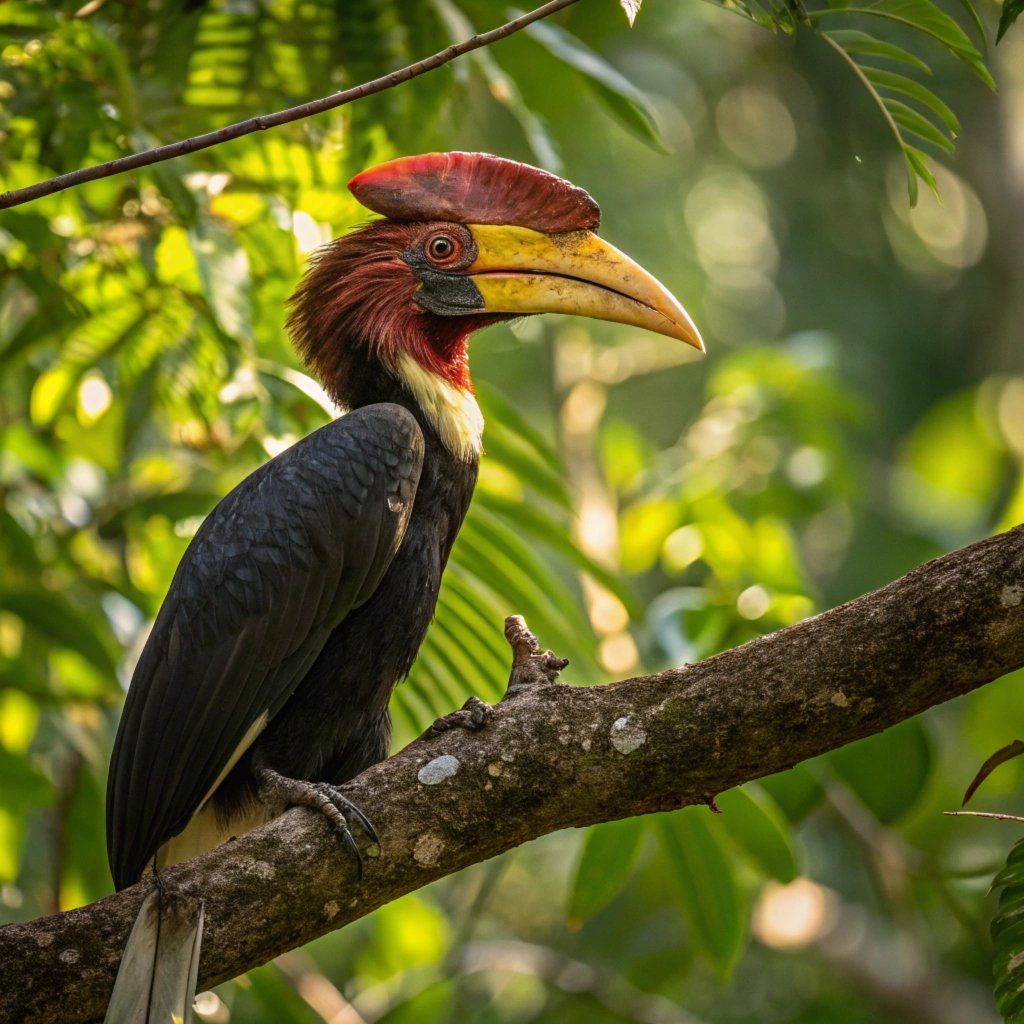
The Helmeted Hornbill, scientifically known as Rhinoplax vigil, stands out even among the already unusual hornbill family.
Native to the Malay Peninsula, Sumatra, and Borneo, this bird’s most striking feature is its enormous casque – a helmet-like structure atop its bill.
This solid keratin growth can account for up to 11% of the bird’s total weight, giving it a top-heavy and somewhat comical appearance.
At 43 to 47 inches in length and weighing up to 6.8 pounds, the Helmeted Hornbill is an imposing presence in its tropical forest habitat.
Its maniacal cackle adds to its eerie persona, often startling those who encounter it. Despite its unusual looks, this bird plays a crucial role in seed dispersal, particularly for figs.
Tragically, the Helmeted Hornbill is critically endangered due to poaching for its casque, which is valued in some cultures as “red ivory,” highlighting the urgent need for conservation efforts to protect this unique species.
The California Condor: A Face Only a Mother Could Love
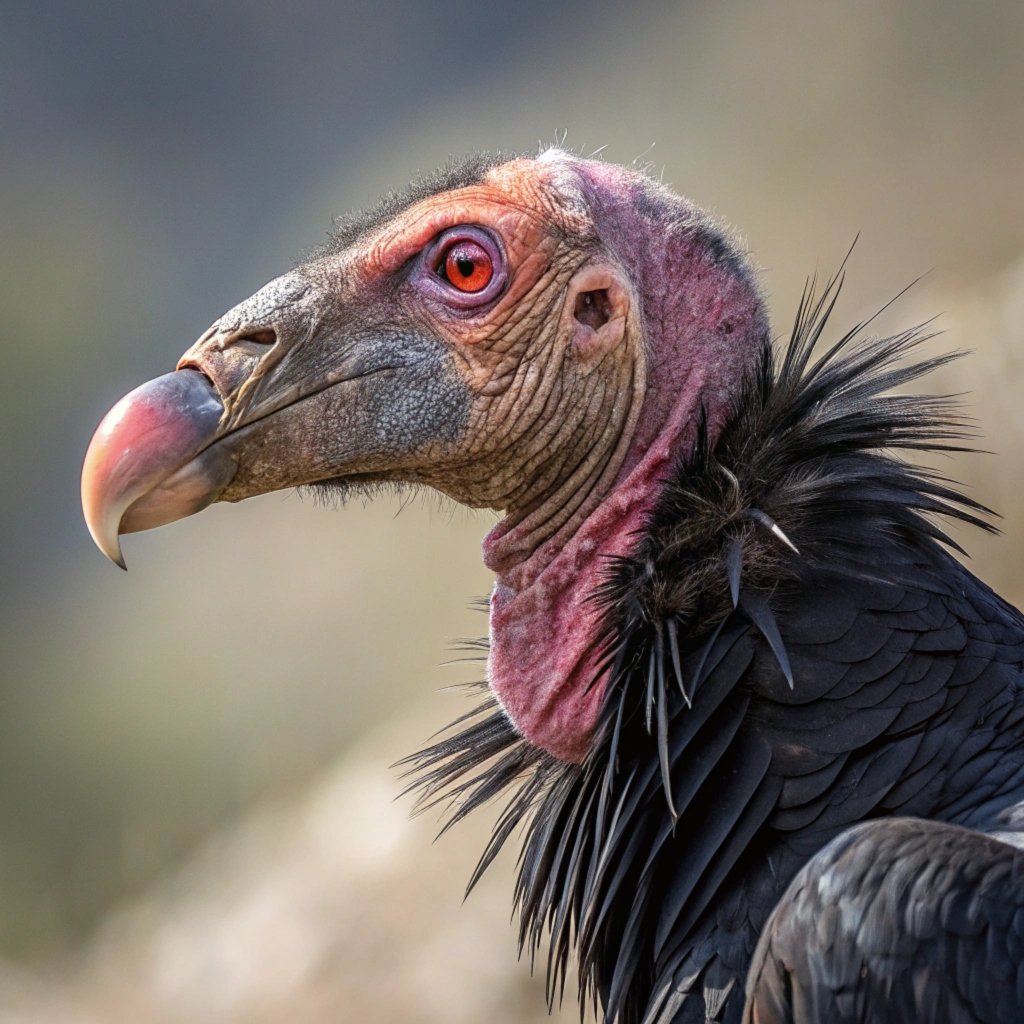
The California Condor, Gymnogyps californianus, is North America’s largest land bird and one of its most distinctive – though not for reasons of conventional beauty.
With a wingspan reaching up to 9.8 feet and a weight of up to 23 pounds, this massive bird commands attention. Its most striking features are its bare head and neck, which can change color based on the bird’s emotional state, ranging from yellow to bright red.
The condor’s beady eyes set in its nearly featherless head give it an almost prehistoric appearance.
Despite its unappealing looks, the California Condor plays a vital role as a scavenger, helping to clean up carcasses and prevent the spread of disease.
Once on the brink of extinction, with only 22 individuals left in the wild in 1982, intensive conservation efforts have brought this species back from the edge, showcasing the importance of preserving even the most unconventional-looking creatures in our ecosystems.
The Long-wattled Umbrellabird: Nature’s Peculiar Dandy
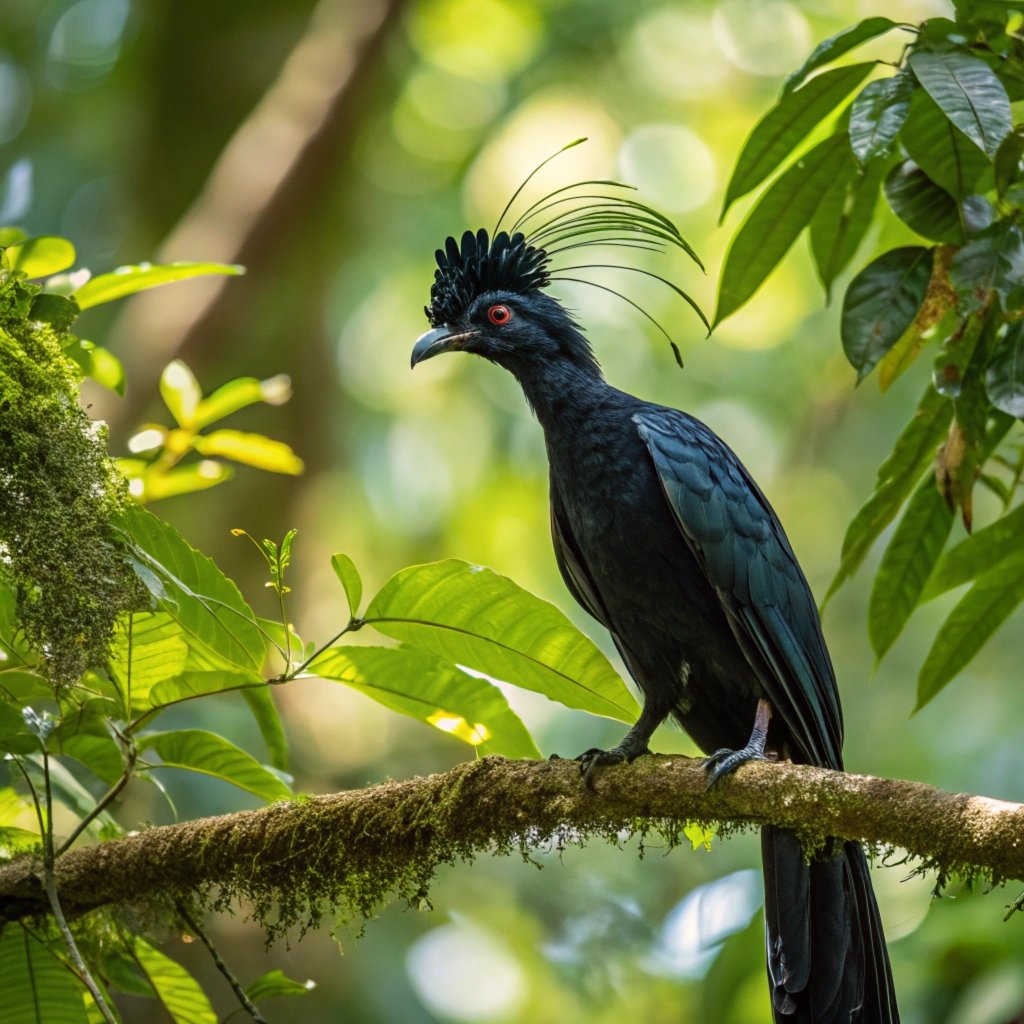
The Long-wattled Umbrellabird, scientifically known as Cephalopterus penduliger, is a bird that seems to defy conventional avian design.
Native to the humid forests of Colombia and Ecuador, this jet-black cotinga stands out due to its most unusual feature: an extremely long wattle dangling from the male’s throat.
This fleshy appendage can reach up to 35 cm in length and is used in elaborate courtship displays.
The bird’s name also comes from another distinctive feature: a large, umbrella-like crest on its head, which adds to its eccentric appearance.
At 20 inches long with a wingspan of up to 28 inches, the Long-wattled Umbrellabird is a substantial presence in its forest habitat.
Its diet consists of a variety of foods, including lizards, insects, and fruits, particularly palm nuts.
While its appearance might seem bizarre to human eyes, it’s a perfect example of how sexual selection can lead to the evolution of extravagant features that, while not necessarily practical, play a crucial role in the species’ reproduction and survival.
The King Vulture: Colorful Yet Unsettling
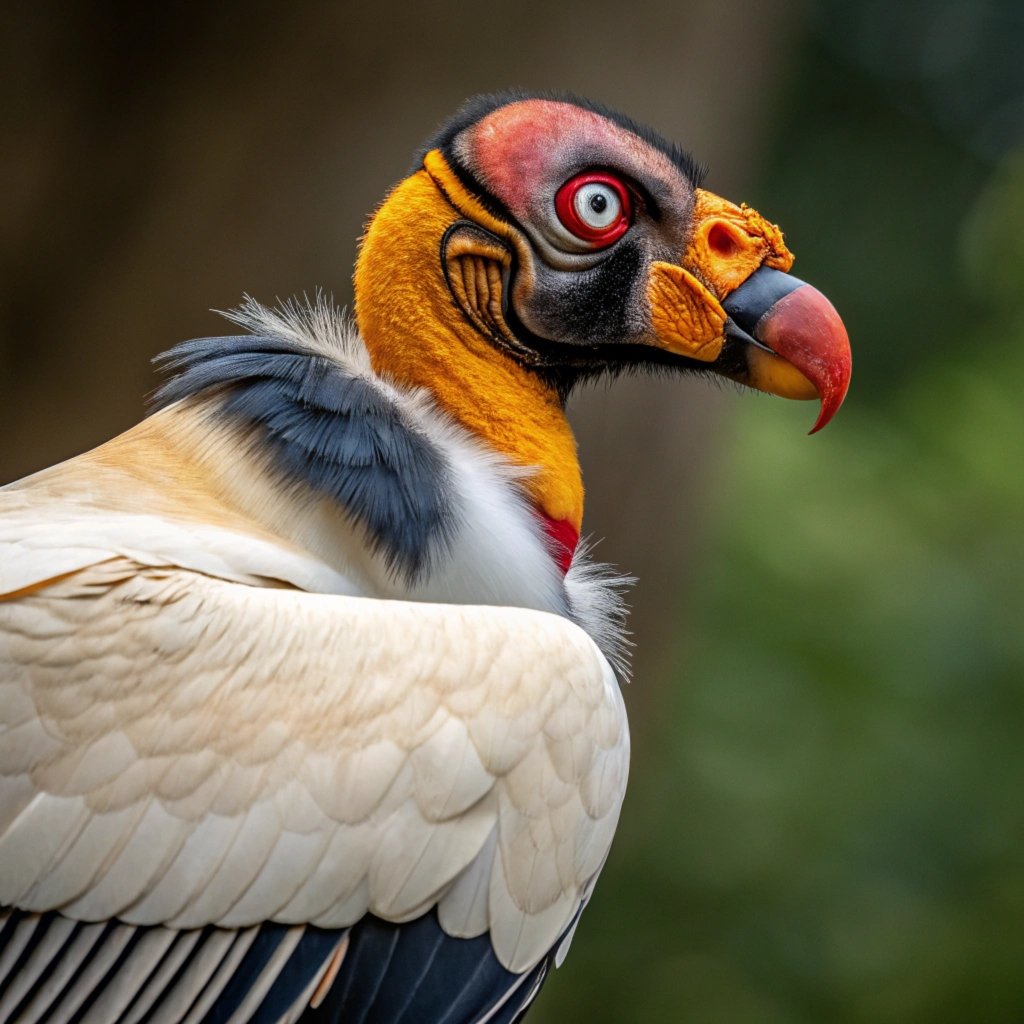
The King Vulture, Sarcoramphus papa, presents a striking contrast between vibrant colors and unsettling features.
Native to Central and South America, this large bird is easily recognizable by its multicolored head and neck, which display a palette of reds, oranges, purples, and yellows.
However, its most distinctive and perhaps unattractive feature is the bright orange caruncle – a fleshy growth atop its beak.
This unusual appendage, while off-putting to human observers, serves an important purpose in attracting mates.
The King Vulture’s bald head, a common feature among vultures, is an adaptation that allows for easier cleaning after feeding on carrion.
Despite its unconventional appearance, the King Vulture plays a crucial role in its ecosystem as a scavenger, helping to prevent the spread of disease by consuming dead animals.
Its unique looks, combining vivid colors with unusual structures, make it one of the most recognizable and intriguing birds in the Americas, even if it wouldn’t win any beauty contests by human standards.
The Southern Screamer: Nature’s Odd Duck
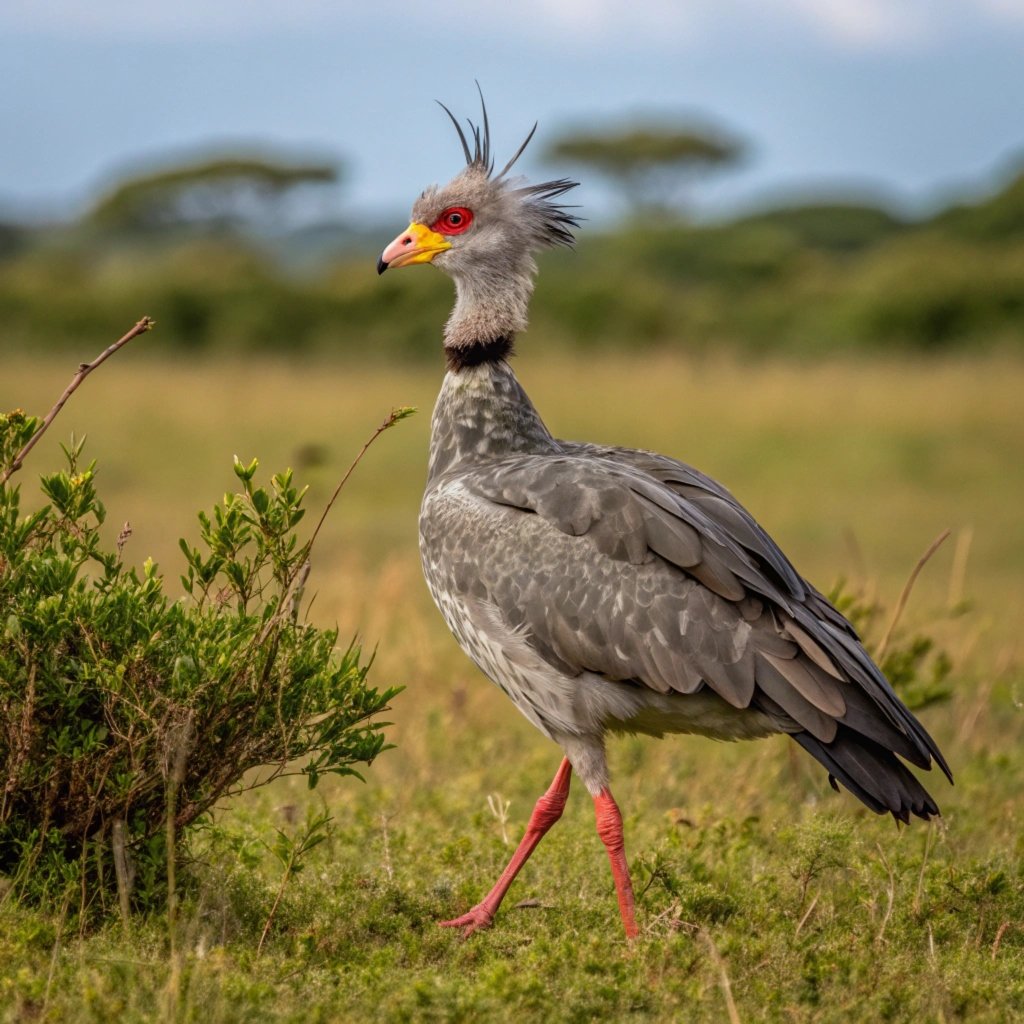
The Southern Screamer, scientifically known as Chauna torquata, is a bird that seems to challenge the very definition of avian grace.
Native to South America, from Brazil down to Argentina, this unusual creature boasts a combination of features that make it stand out in the bird world.
Its most striking characteristic is its disproportionally tiny head perched atop a goose-sized body, creating an almost comical silhouette.
The Southern Screamer’s minuscule hooked beak seems ill-suited for its large frame, adding to its peculiar appearance.
Perhaps its most unusual feature is its feet – enormous with long toes adapted for walking in marshy habitats.
Despite its ungainly looks, the Southern Screamer is well-adapted to its environment, using its powerful legs to navigate through wetlands and its loud, piercing call to communicate over long distances.
This bird’s unique appearance serves as a reminder that in nature, function often trumps form, resulting in creatures that may not fit our aesthetic ideals but are perfectly suited to their ecological roles.
The Muscovy Duck: A Face That’s Hard to Forget
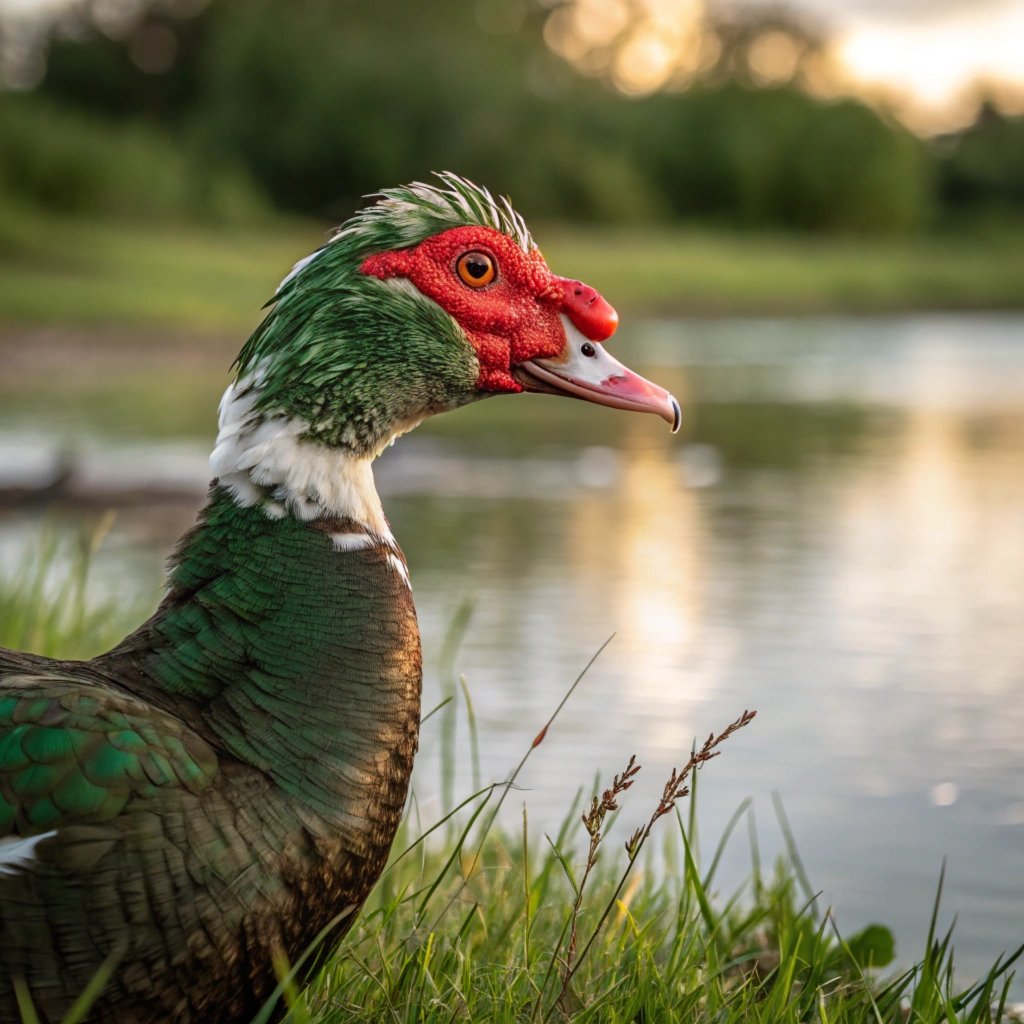
The Muscovy Duck, Cairina moschata, is a bird that challenges conventional notions of duck attractiveness.
Native to Mexico, Central, and South America, this large waterfowl is easily recognizable by its most distinctive feature: a face covered in bright red caruncles – fleshy growths that give it a warty appearance.
These caruncles become more pronounced with age, particularly in males, leading to an increasingly unusual look over time.
The Muscovy Duck’s large size, often reaching up to 15 pounds, and its disproportionate head-to-body ratio add to its unconventional appearance.
Despite its less-than-appealing looks, the Muscovy Duck is highly valued in many parts of the world for its meat, which is said to taste more like beef than typical poultry.
In the wild, these ducks play important roles in their ecosystems, helping to control insect populations and disperse seeds.
The Muscovy Duck’s unique appearance serves as a reminder that in nature, beauty is often in the eye of the beholder, and that even the most unusual-looking creatures have their place and purpose in the natural world.
FAQs
What makes a bird considered “ugly”?
The perception of ugliness in birds is largely subjective and based on human aesthetic preferences. Generally, features like disproportionate body parts, unusual growths, bare skin, and dull or mottled coloration contribute to a bird being considered unattractive. However, these features often serve important biological functions.
Do these “ugly” birds face any specific conservation challenges?
Yes, many of these birds face conservation challenges. For example, the California Condor and Northern Bald Ibis are critically endangered due to habitat loss, hunting, and other human activities. Their unique appearances sometimes make them targets for poaching or persecution.
Are there any benefits to being an “ugly” bird?
Absolutely. Many of these birds’ unusual features serve crucial purposes. For instance, the bare heads of vultures help them stay clean while feeding on carrion, and the Potoo’s strange appearance aids in camouflage. These adaptations often give them advantages in their specific ecological niches.
How do these birds’ appearances affect their mating success?
Interestingly, features that humans find unattractive can be highly appealing to potential mates within the species. The Long-wattled Umbrellabird’s wattle, for example, is used in courtship displays and is attractive to females of the species.
Are there any cultural significances attached to these “ugly” birds?
Yes, many of these birds hold cultural importance in various societies. The Marabou Stork, for instance, is often associated with wisdom in some African cultures, while the Shoebill has been revered in ancient Egyptian art.
How do wildlife photographers approach capturing images of these unusual-looking birds?
Wildlife photographers often find these birds challenging yet rewarding subjects. Their unique features can make for striking images, but their behaviors or habitats can make them difficult to photograph. Patience and understanding of the birds’ habits are key.
Can the appearance of these birds change over time?
Yes, some of these birds’ appearances can change. For example, the caruncles on a Muscovy Duck become more pronounced with age. Seasonal changes can also affect appearance in some species.
Are there any ongoing studies about these birds’ unique features?
Scientists continually study these birds to understand the evolutionary advantages of their unique features. Research often focuses on how these adaptations aid in survival, mating, or ecological roles.
Do any of these birds make good pets?
Generally, it’s not recommended to keep wild birds as pets. However, some species like the Muscovy Duck have domesticated varieties that are kept for eggs or meat production.
How do zoos and wildlife centers use these “ugly” birds in their educational programs?
These unique-looking birds often serve as excellent ambassadors for biodiversity in educational programs. Their unusual appearances can spark curiosity and lead to discussions about adaptation, evolution, and the importance of conservation.

Hello, I’m Emily Price, the founder of Birds Affection. As a passionate bird enthusiast and spiritual seeker, I’ve always been fascinated by the symbolic meanings and mystical connections between birds and our lives. On this website, I share my knowledge and insights on the spiritual significance of various bird species, exploring their roles as messengers, guides, and teachers. Through my writing, I aim to inspire and educate others on the profound wisdom and beauty that birds bring to our world. Join me on this journey as we delve into the enchanting realm of bird symbolism and discover the hidden meanings behind these magnificent creatures.

